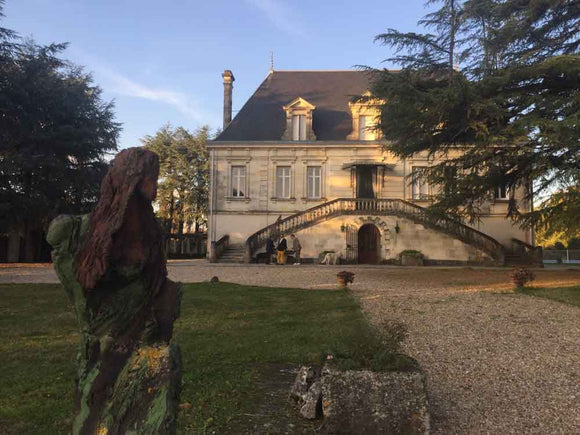Terroir
Its Cabernet Franc and Merlot vines (around 60/40), with an average age of over 45 years, were planted on 32 hectares of the slopes and plateau of the estate. The land of Maison Blanche is made up of clays with traces of limestone and iron dross. Since 2001, soil life and plant immunity have been stimulated by biodynamic sprays.
Almost in its center, a large 19th century house in white stone from Poitou, in the heart of a park, commands a group of buildings housing a battery of traditional vats, one of the largest barrel cellars in Libourne and an underground cellar of old vintages.







